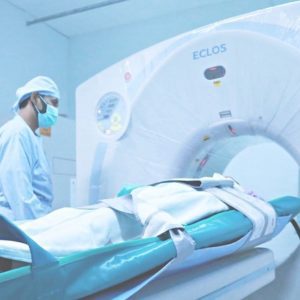Stiff-Person Syndrome (SPS)
What is stiff-person syndrome (SPS)?
Stiff-person syndrome (SPS) is a rare acquired neurological disorder that is characterized by progressive muscle stiffness and rigidity with repeated episodes of painful muscle spasms. These muscle problems often fluctuate, and may occur either randomly or be triggered.
What causes stiff-person syndrome (SPS)?
The exact cause of SPS is not known, but some speculate that it may be an autoimmune disorder because patients with SPS generally have large amounts of high glutamic acid decarboxylase antibodies.
What are the symptoms of stiff-person syndrome (SPS)?
People with SPS suffer progressive stiffness in the muscles in their torso. This stiffness then leads to a change in posture and gait, sometimes even surmounting to patients becoming unable to walk or bend. This stiffness is superimposed by spasms and an extreme sensitivity to touch and sound. These spasms can cause patients to become increasingly fearful and to develop agoraphobia and dromophobia.
How is stiff-person syndrome (SPS) diagnosed?
SPS is diagnosed through an identification of the characteristic symptoms of the condition, a detailed patient and family history, and a thorough clinical evaluation. In addition, antibody screening tests and EMGs can also be used to help rule out other potential conditions and confirm a diagnosis.
What are the available treatments for stiff-person syndrome (SPS)?
Currently, treatment of SPS is centered around dealing with the specific symptoms in each individual. Drugs called benzodiazepines can be used to treat muscle stiffness and spasms, and sometimes anti-seizure medications can be used, as well.
In addition to these treatment options, IVIG could be a safe and effective treatment option for SPS patients, but more research needs to be done to solidify this.
Where can I find more information on stiff-person syndrome (SPS)?
Stiff-Person Syndrome (SPS) Articles


Celine Dion Isn’t Slowing Down Despite Stiff Person Syndrome Diagnosis





Singer Celine Dion and British man Ian Rawlins both live with Stiff Person Syndrome




